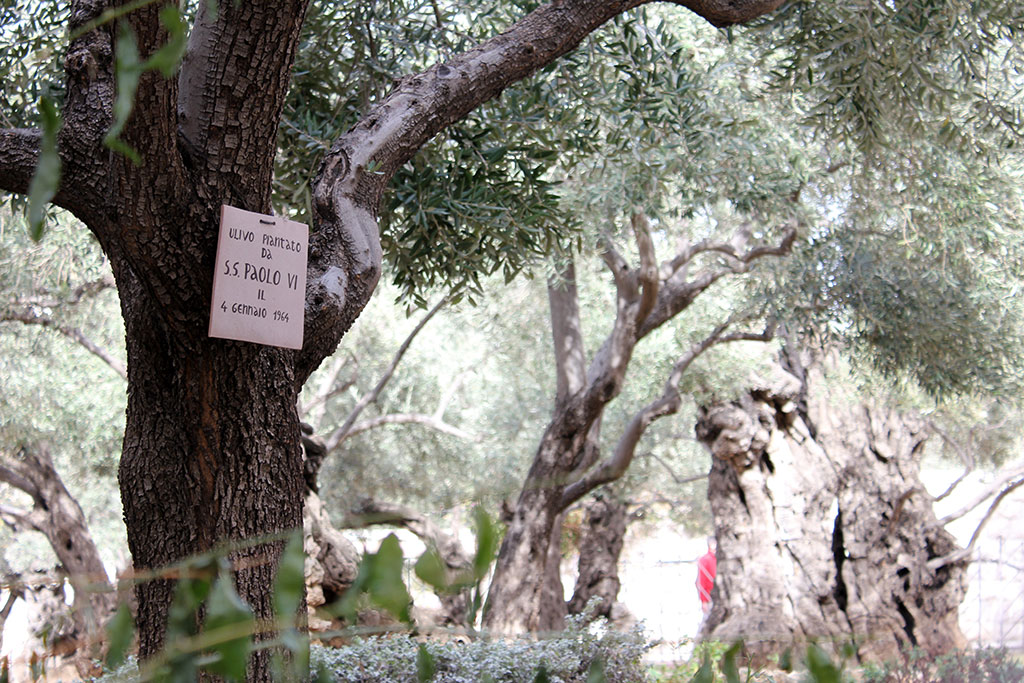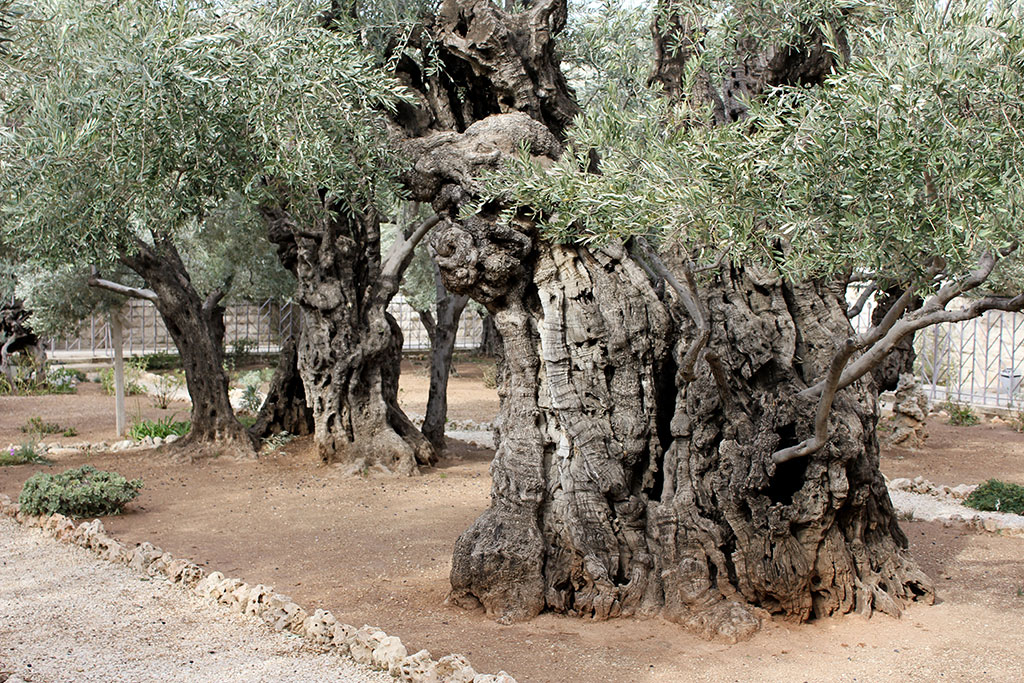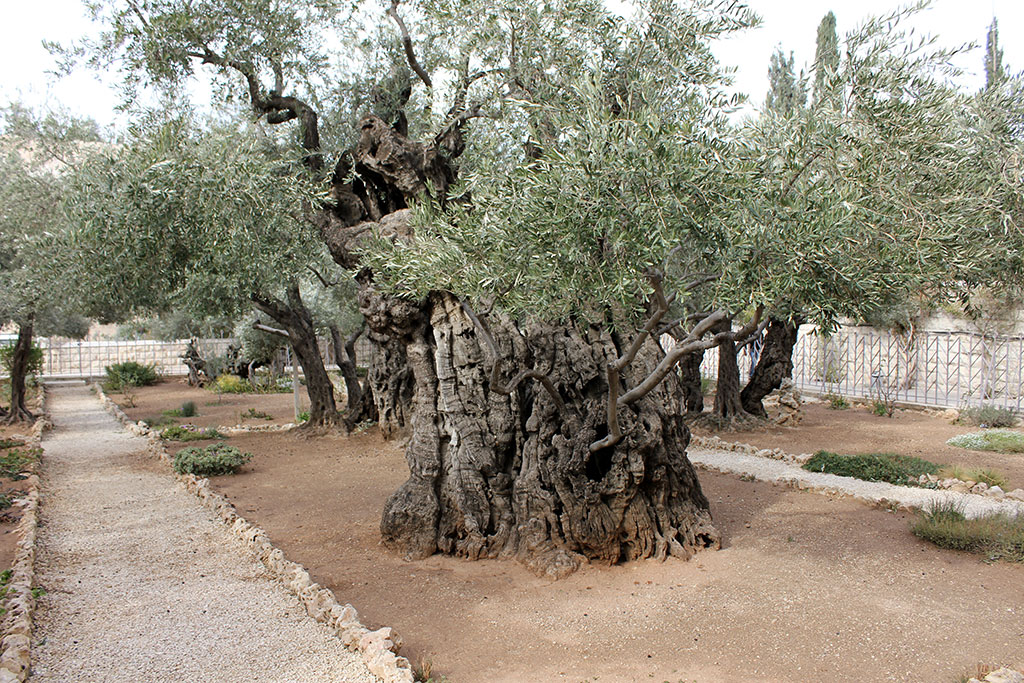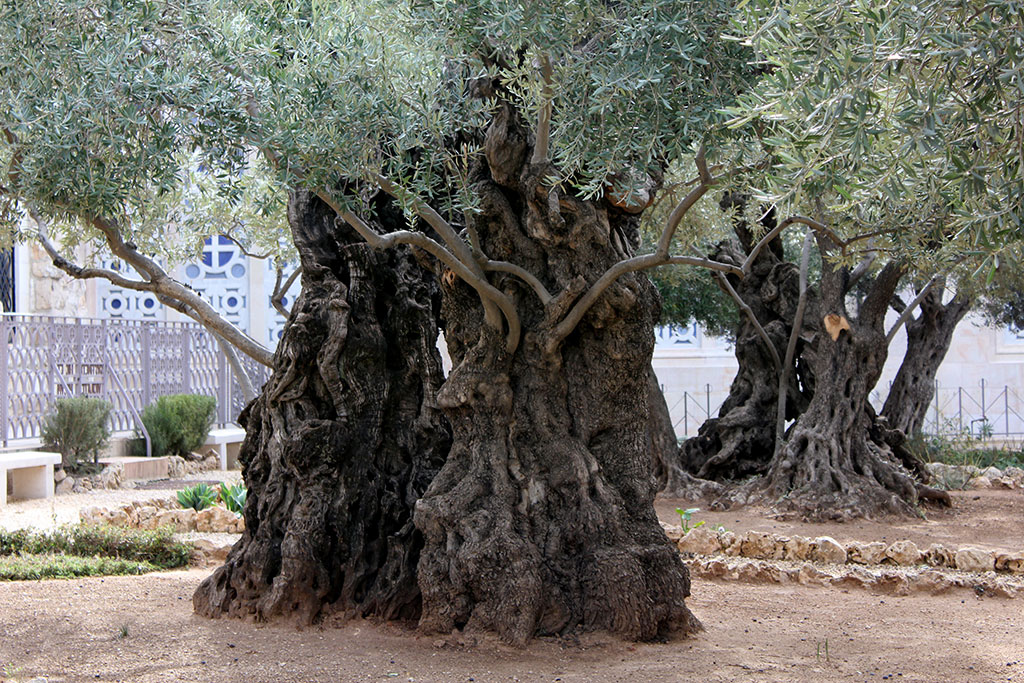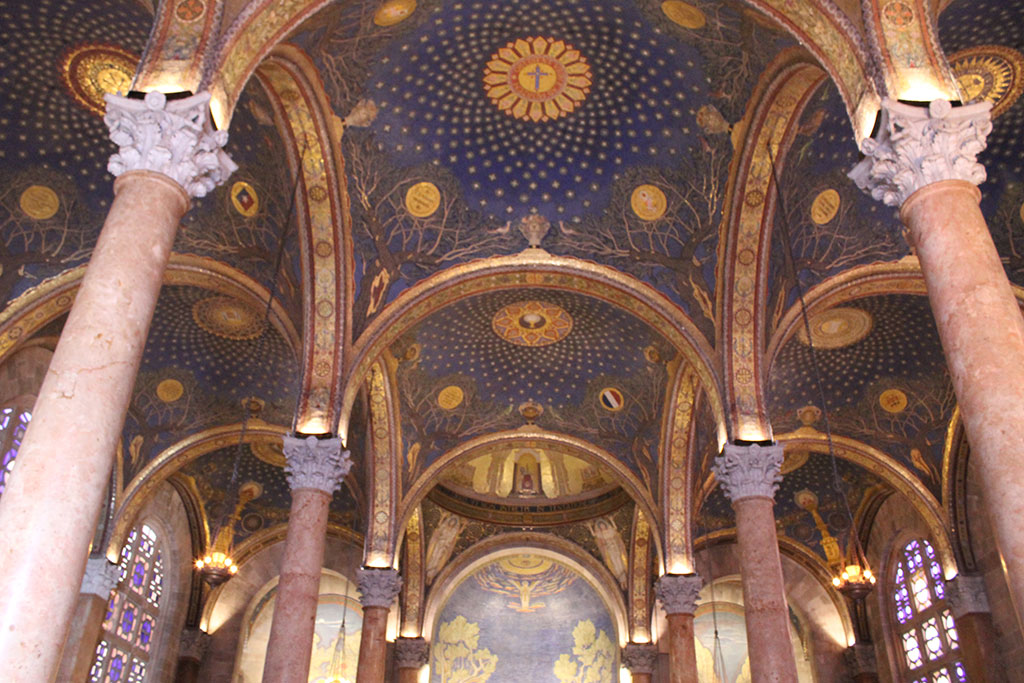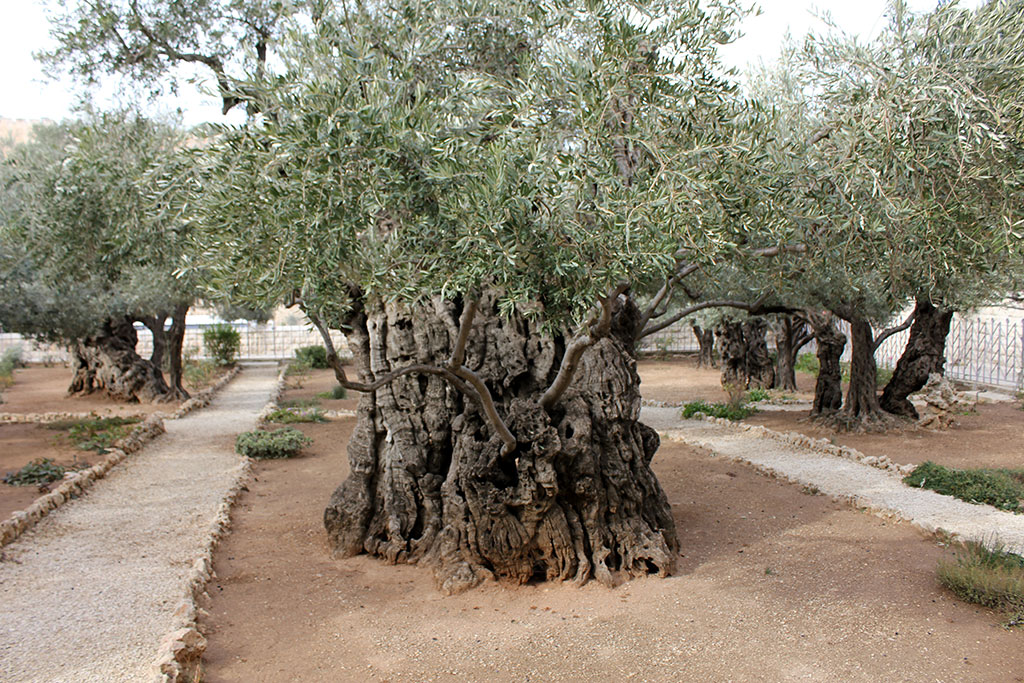The Chapel of the Ascension is a small shrine located on the top of Mount of Olives, site the faithful traditionally believe to be the earthly spot where Jesus ascended into Heaven forty days after his resurrection. It houses a slab of stone believed to contain one of his footprints of Jesus, the Messiah.
The first structure was constructed on the site of the actual chapel. It was a rotunda, open to the sky, surrounded by circular porticos and arches. In 390 AD, Poimenia, a wealthy and pious Roman aristocratic woman of the imperial family financed the addition of a Byzantine style church at the original site built by Helena.
The Ascension of Jesus
The ascension is the second stage of Jesus Christ’s three-stage exaltation, in which after his bodily resurrection (the first stage) he visibly departed earth and entered the presence of God in heaven to be crowned at his right hand with glory, honor and authority. The third stage, his enthronement, or session at God’s right hand, commences his perpetual reign and intercession for his people.
In NT usage Jesus’ triumph after his death, his exaltation, refers to either the whole of a three-stage process (resurrection, ascension and session); to stages two and three (ascension and session) taken together; or to stage two, the ascension. Acts gives the most detail about the ascension. It brings out its decisive role for christology, the coming of salvation blessings, the church’s mission, and eschatology. The book of Hebrews teaches that the ascension was essential to the completion of Christ’s high-priestly work and to his continuing intercessory work. 1 Peter and Revelation pursue the theme of ascension as victory over hostile spiritual powers. In the apostolic fathers the ascension undergirds the Christian calendar and, since it culminates in Christ’s universal reign, it provides a rationale for virtue.
“Ascension,” DLNTD, 95-96.
Most modern Lives of Christ commence at Bethlehem and end with the Ascension, but Christ’s life began earlier and continued later. The Ascension is not only a great fact of the NT, but a great factor in the life of Christ and Christians, and no complete view of Jesus Christ is possible unless the Ascension its consequences are included. It is the consummation of His redemptive work. The Christ of the Gospels is the Christ of history, the Christ of the past, but the full NT picture of Christ is that of a living Christ, the Christ of heaven, the Christ of experience, the Christ of the present and the future. The NT passages referring to the Ascension need close study and their teaching careful observation.
“Ascension,” ISBE, paragraph 4937.

A Feast observed with great solemnity forty days after Easter in commemoration of our Lord’s Ascension into Heaven. It is also called Holy Thursday. St. Augustine, A.D. 395, calls this one of the Festivals which are supposed to have been instituted by the Apostles themselves, so that it must have been generally observed in his time. In the system of the Church, Ascension Day is regarded as one of the very highest Festivals set apart in honor of our Lord. Proper Psalms, Proper Lessons and Proper Preface in the Communion service place it on the same footing as Christmas Day, Easter and Whitsun Day. The services are usually brightened with special music; the Altar is decked with flowers and white hangings as symbolical of the joy which characterizes the Celebration. Ascension Day is preceded by the ROGATION DAYS (which see), as days of preparation for its due observance; it is also one of the Days OF OBLIGATION (which see).
“Ascension Day,” The American Church History Series, 27.
Ascension and Heavenly Session of Christ. The Christian doctrine of the ascension and heavenly session of Christ, though undoubtedly an important part of the NT witness (Lk. 24:51; Acts 1:9–11; Eph. 4:8), was little developed before the time of Augustine. This was at least partly because until that time it was regarded as an integral part of Christology, as both the Old Roman and the Nicene Creeds bear witness.
Regarded as a separate doctrine, the ascension of Christ is significant for several reasons. First, it represents the culmination of the earthly ministry of Jesus. His death and resurrection could not have their full effect until he ascended to the presence of his Father, to whom he presented his finished work of atonement (Heb. 4:14–15). The ascension is the moment when the manhood of Jesus is taken up to God and glorified, the final assurance and the first fruits of our eternal salvation.
The ascension is also important because it reminds us that the body of Christ is now no longer present within the time and space framework, but belongs to the Son of God in eternity. This has a significant bearing on the use of ‘body of Christ’ imagery to describe both the church and the eucharist. Augustine and the Reformers were both insistent that this had to be understood as a spiritual, not as a physical reality. For the Reformers in particular, this meant that the medieval doctrines of transubstantiation and the visible church as the body and bride of Christ could not possibly be true.
The ascension has also been interpreted in terms of man’s glorification in the wake of the resurrection. At times this has been pressed to the point of denying the forty-day interlude between Christ’s rising from the dead and his going up into heaven, the importance of which lies in the teaching ministry of Jesus to his disciples during that time. Some scholars have even argued that the transfiguration accounts in the gospels have been displaced from their supposed origin as ascension narratives. In fact, although there are superficial similarities between the two, the transfiguration more closely resembles a descent from heaven (as e.g. Moses and Elijah) than an ascent.
The heavenly session was not generally distinguished from the ascension before the Reformation, and it continues to be a characteristic mark of Calvinist theology. It is important because it emphasizes Christ’s entry into his kingly office, and is distinguished for this reason in the ancient creeds. Christ’s present reign is a reminder that his work on our behalf continues in the present. His victorious triumph assures us of the efficacy of his work of mediation, and is particularly important for our understanding of the work of the Holy Spirit. When the doctrine of heavenly session is eclipsed, the work of the Spirit can be detached from that of Christ, either by too high a doctrine of the visible church, or by a spirituality which virtually ignores the work of Christ altogether, or regards it as only the beginning of the church’s life.
When that happens, the emphasis shifts from Christ’s historical atonement to the power of God at work in the world today. The result of this is that many Christians believe that it is possible to draw on that power independently of the atonement, which is the true basis and content of Christ’s mediation. The heavenly session reminds us that Christ’s work is at once efficacious and complete, since the one who now sits on the throne is the Lamb who was slain on the cross of Calvary (Rev. 22:1, 3).
“Ascension and Heavenly Session of Christ.,” New Dictionary of Theology, 46-47.






